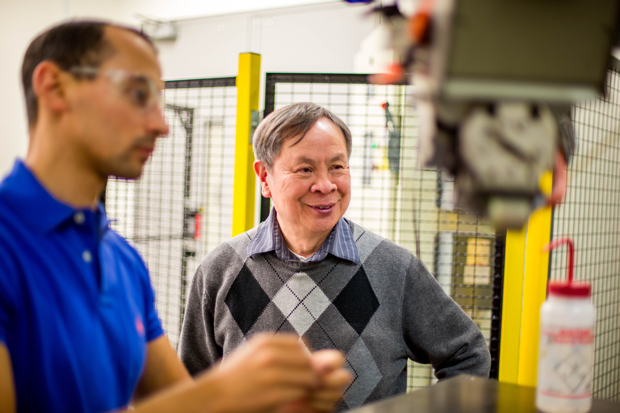Concordia’s leader in lightweight materials
 When he began his research, Suong Van Hoa was the only professor working on composites in Quebec.
When he began his research, Suong Van Hoa was the only professor working on composites in Quebec.
At the start of his career, Suong Van Hoa was tasked with writing a major grant proposal on innovative research. Unsure about what path to take, he reached out to his former PhD supervisor for suggestions. He got a one-word response that would define his career and change his field: “Composites.”
After some initial research, Hoa discovered the need for innovative work on lightweight materials in the transportation industry. He then went on to help develop thermoplastic composite tubes for helicopter landing gear — a structure that is unique in the world.
American Society for Composites Fellowship
Today, Hoa is the founder and director of the Concordia Center for Composites. A leader in his chosen field, he also holds the Natural Science and Engineering Research Council of Canada (NSERC) Chair in Automated Composites Manufacturing, and the Concordia University Research Chair in Materials and Composites.
This fall the professor in Concordia’s Department of Mechanical and Industrial Engineering became the first Canadian to be named a fellow of the American Society for Composites for his “outstanding contributions to the composites community through research, practice, education and service.”
Hoa says that receiving the award “is quite an honour, particularly for somebody outside of the United States.” Since the society’s founding in 1985, this is only the second time that a fellowship has been given to someone outside the United States.
Research that benefits industry
Hoa's research tackles two big questions: “How do we provide low-weight, low-cost, high-performance aircraft structures that are environmentally friendly; and how do we detect defects in composite structures, such as airplanes, automobiles and wind turbines, to ensure that they are safe.”
When he began his research in the late 1970s, composite development was popular in industry but there were very few academics working on the subject. In fact, he was the only professor working on composites in the province of Quebec.
Given its implications for manufacturing, transportation and aerospace, composite research is becoming increasingly popular. Most universities now have at least one researcher working in the field.
Hoa’s new fellowship in the American Society for Composites acknowledges his career-long commitment to research, knowledge and industry experience. It honours the crucial decision he made over 40 years ago: to strike out on a new path.
Find out more about the Concordia Center for Composites.


